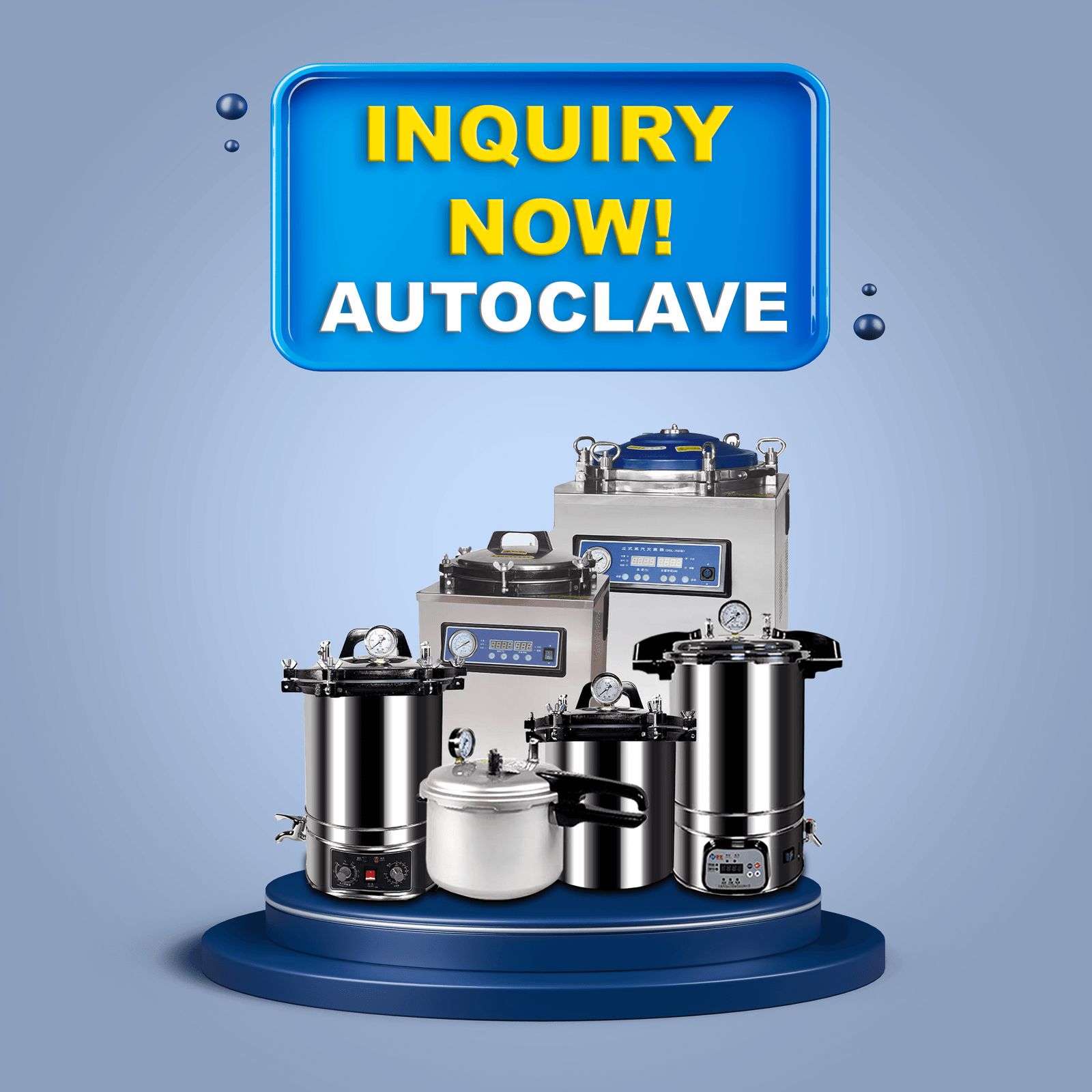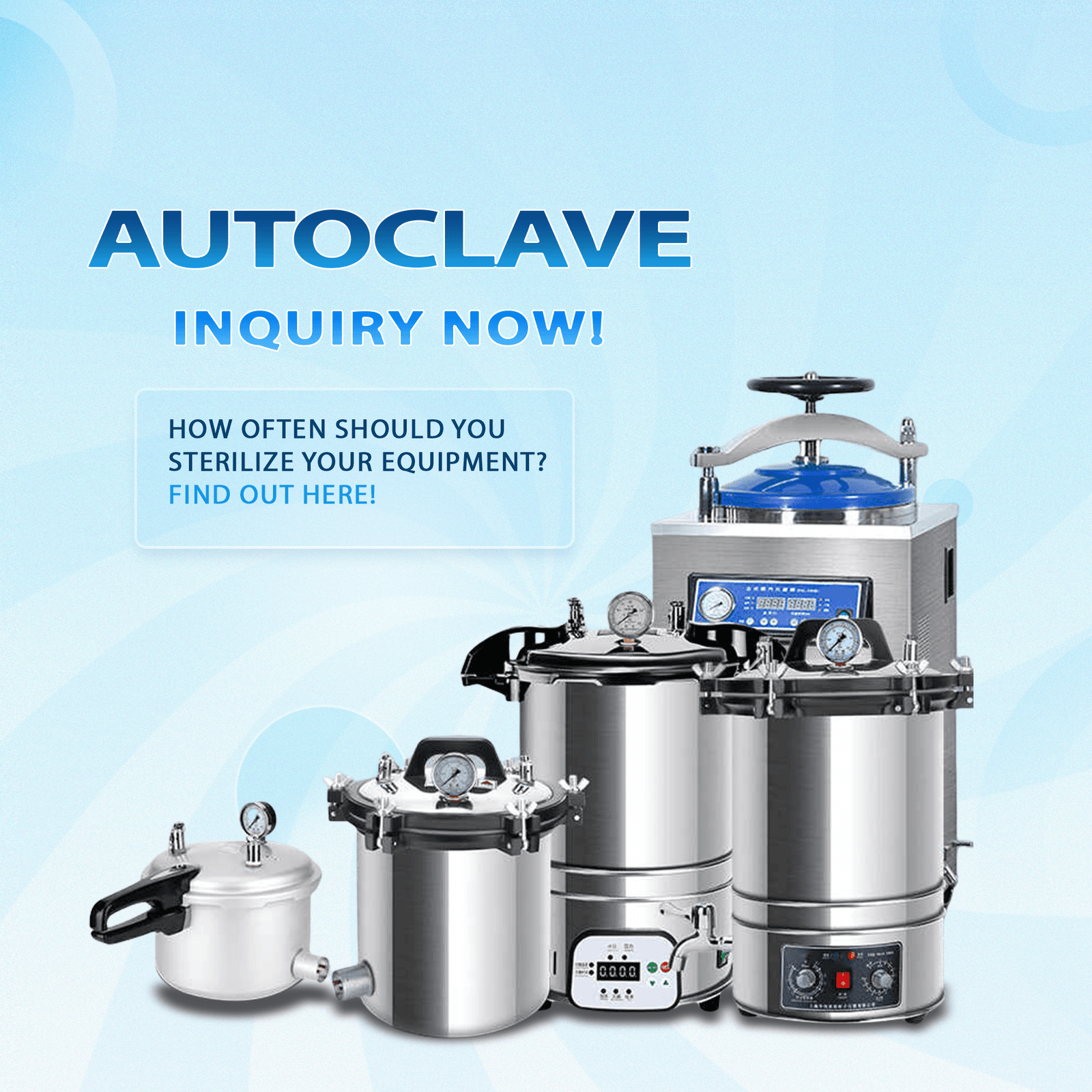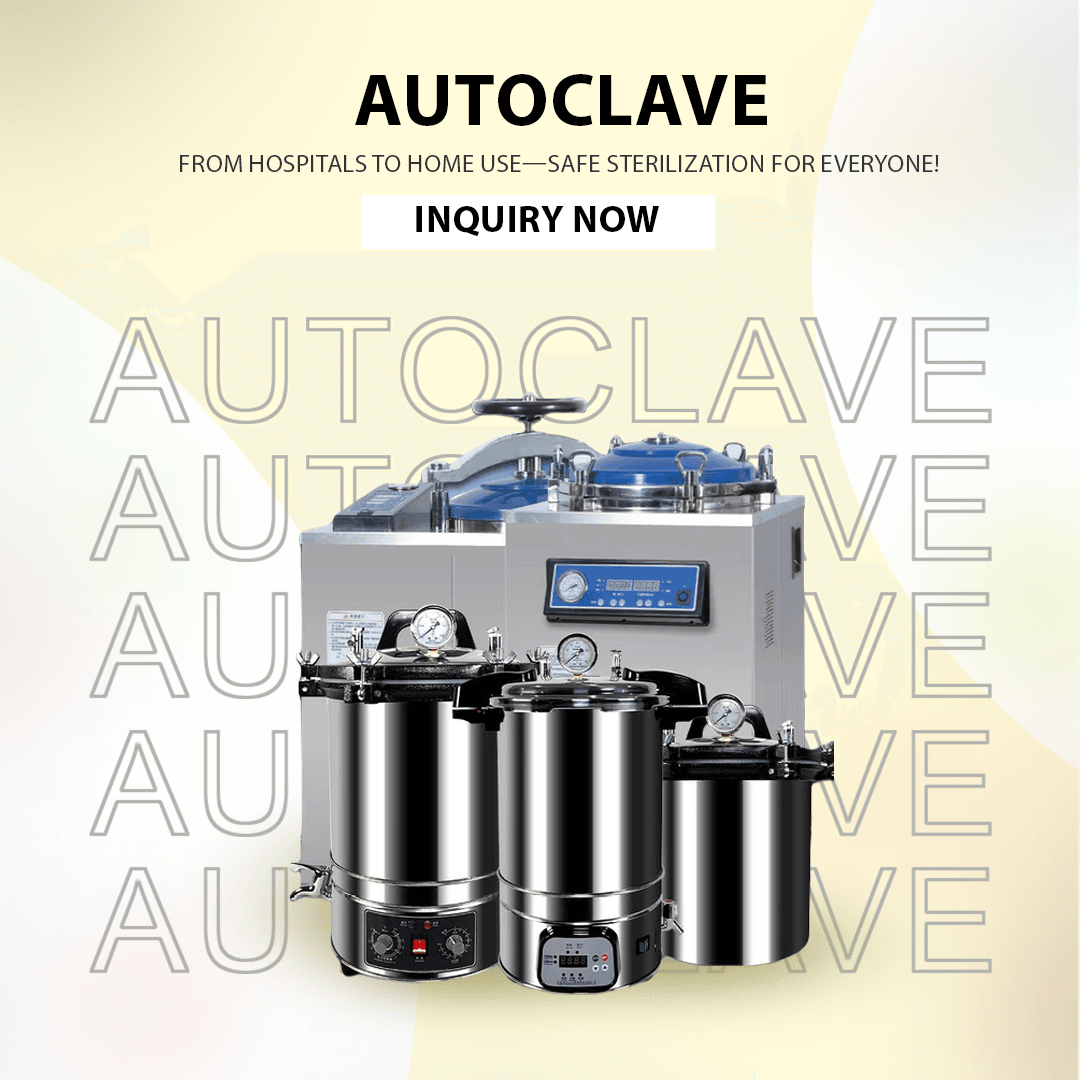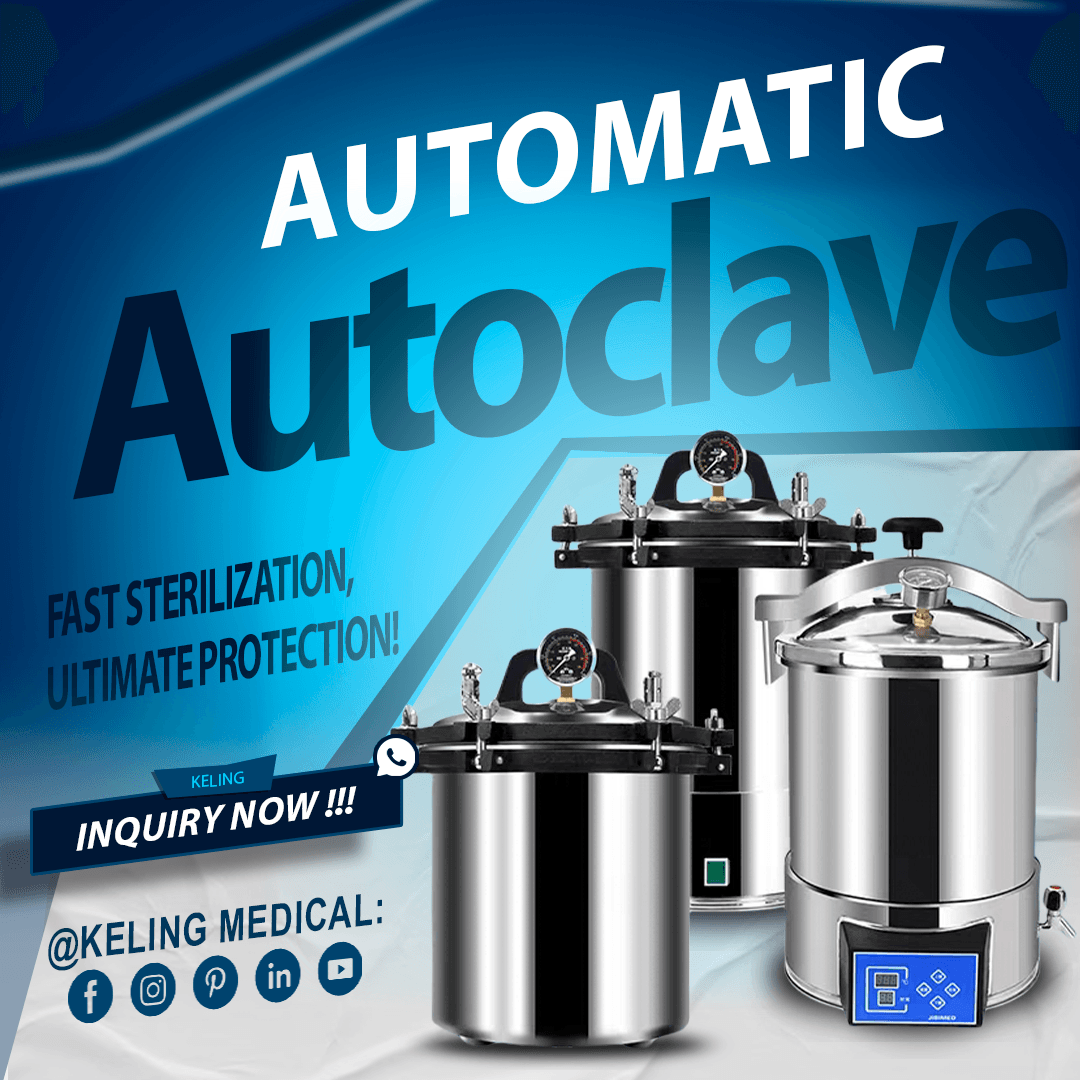
For medical equipment distributors, dealers, and procurement professionals, understanding what the autoclave is used for is crucial in recommending and supplying the right solutions to clients in healthcare, laboratories, industrial, and commercial settings. This guide explores the diverse uses and applications of autoclaves, offering practical insights for selecting the right equipment for every need.
Autoclaves play a vital role in healthcare settings because they help maintain patient safety through sterilization which meets regulatory requirements.
Autoclaves are commonly used in healthcare facilities for sterilizing surgical instruments. During medical procedures scalpels, forceps, scissors, clamps, and retractors come into contact with blood tissue and bodily fluids. Autoclaving removes all bacteria, viruses, fungi, and spores from surgical instruments before they can be reused again which lowers the chance of surgical site infections and prevents cross-contamination.
Autoclaves enable the rapid and efficient processing of multiple surgical instruments at once.
Sterilization of instruments can apply to both wrapped and unwrapped forms based on facility protocols.
The high-pressure steam cleans both intricate instruments and hinged devices through deep penetration to achieve total sterilization.
A variety of potentially infectious waste items such as used bandages, gloves, gowns, and disposable instruments are produced by hospitals in large quantities. Before disposal medical waste undergoes sterilization through autoclaves to become safe and non-infectious.
Autoclaving medical waste diminishes the potential for environmental contamination and disease spread.
The procedure meets all requirements of both local and global waste management standards.
Supports sustainable and responsible healthcare operations.
Research and diagnostic laboratories rely on autoclaves to create sterile conditions which are necessary for producing accurate results while ensuring safety for laboratory personnel.
Autoclaves serve as essential tools in research settings to sterilize laboratory glassware alongside media and equipment. All laboratory equipment such as beakers, flasks, test tubes, culture media, and pipettes must remain contaminant-free to guarantee reliable experimental results.
Autoclaving prevents contamination of cultures and experiments.
Suitable for sterilizing reusable laboratory tools.
Essential for compliance with laboratory safety standards.
Microbiology labs frequently handle pathogenic microorganisms. Sterilization of biohazardous waste along with contaminated materials and culture media occurs through autoclaving to stop harmful agents from accidental release.
Ensures biosafety by inactivating dangerous pathogens.
Facilitates safe disposal of infectious waste.
Adherence to biosafety regulations and standards demands this requirement.
Autoclaves serve multiple industrial and commercial purposes outside their applications in healthcare and laboratory settings.
The food industry uses autoclaves known as retorts to sterilize canned foods and beverages. The sterilization procedure eliminates spoilage-causing microorganisms thereby prolonging food storage life and guaranteeing safety for consumption.
Autoclaves sterilize low-acid food items including vegetables, meats and dairy products.
Ensures compliance with food safety regulations.
Maintains product quality and safety for consumers.
The autoclaves in tattoo parlors, piercing studios, and beauty salons serve the purpose of sterilizing reusable instruments like needles, forceps, and scissors. Autoclaves help prevent hepatitis and HIV transmission through proper sterilization of medical tools.
Essential for client safety and regulatory compliance.
Demonstrates professionalism and commitment to hygiene.
Personal care businesses can establish and maintain trust and a good reputation among clients through autoclave sterilization practices.
The selection of the autoclave should be based on the application requirements along with the volume and regulatory standards. Here are key factors to consider:
Solid Instruments: Standard autoclaves are suitable.
Liquid loads require specific autoclave cycles to avoid boiling over.
Effective steam penetration through porous loads requires the use of vacuum-assisted autoclaves.
Assess the number of items that need sterilization during each autoclave cycle.
Select a chamber size that aligns with your facility’s operational needs.
Today’s autoclaves provide programmable cycles and data logging features along with printouts to meet regulatory requirements.
Ensure the autoclave has pressure-release mechanisms and door interlock systems along with automatic shut-off capabilities for optimal safety.
Provide access that facilitates routine maintenance and ensure dependable technical support.
Ensure your autoclave satisfies all relevant local, national, and international industrial standards.
Understanding what the autoclave is used for is essential for anyone involved in the distribution, procurement, or use of medical and laboratory equipment. Autoclaves are versatile, reliable, and indispensable tools for sterilization across healthcare, laboratory, industrial, and commercial settings. They protect public health, ensure regulatory compliance, and support safe, efficient operations.
For distributors and procurement specialists, matching the right autoclave to your clients’ needs is a mark of expertise and quality service. Stay informed, prioritize safety, and partner with trusted manufacturers to deliver the best solutions for every application.
Autoclaves in hospitals are primarily used for sterilizing surgical instruments, medical devices, and hospital waste to prevent infection and ensure patient safety.
They sterilize glassware, culture media, and biohazardous waste, maintaining a contamination-free environment for accurate research and diagnostics.
Yes, autoclaves (retorts) are widely used in the food industry to sterilize canned foods and beverages, ensuring product safety and longevity.
Consider the type of load, capacity, control features, safety mechanisms, maintenance needs, and compliance with industry standards.
Absolutely. Autoclaves are essential for sterilizing reusable tools, protecting clients from infections, and complying with health regulations.
参照 オートクレーブとは? そして How to Use an Autoclave Safely for detailed guides.
Are you a distributor, dealer, or procurement specialist seeking reliable autoclave solutions for your clients? 連絡先 ケリング・メディカル for expert advice and premium autoclave equipment!
Eメール inquiry@shkeling.com
WhatsApp: +8618221822482
Our team is ready to support your business with industry-leading products and professional guidance. Reach out today to discuss your needs!

医療や研究所の環境では、患者の安全を守り、感染を制御するための重要なステップとして、すべての機器や材料から危険な微生物を完全に除去することを優先しなければならない。オートクレーブ滅菌

医療業界は厳しい規制のもとで運営されており、患者を感染から守り、安全基準を維持するために医療器具の無菌化が求められています。強力なオートクレーブ滅菌器は、医療機器滅菌の中核をなすものです。

オートクレーブは、医療器具や医療材料を滅菌し、感染症の抑制に役立つため、医療に不可欠である。定期的なメンテナンスと適切な洗浄によって、これらの機器が効果的に機能するかどうかが決まります。医療用

オートクレーブは、医療器具や実験器具、その他の重要な材料の無菌状態を維持するために、医療と感染制御において不可欠な機器です。医療機器サプライヤーと調達エキスパート

医療従事者は、感染症を効果的に予防し、患者の健康を守るために、器具や材料の滅菌を優先しなければなりません。オートクレーブ滅菌は、非常に信頼できる方法であることが証明されており、世界中で広く使用されています。

医療業界では厳しい感染対策が要求されるため、安全性と衛生を確保するためには特定の用語や道具が不可欠である。無菌状態が要求される医療現場や研究室では